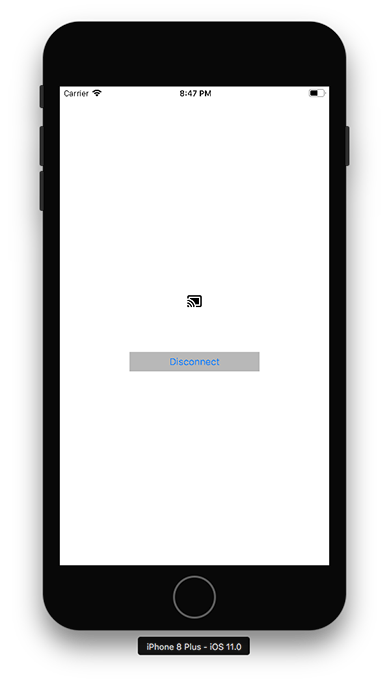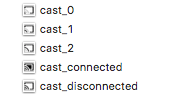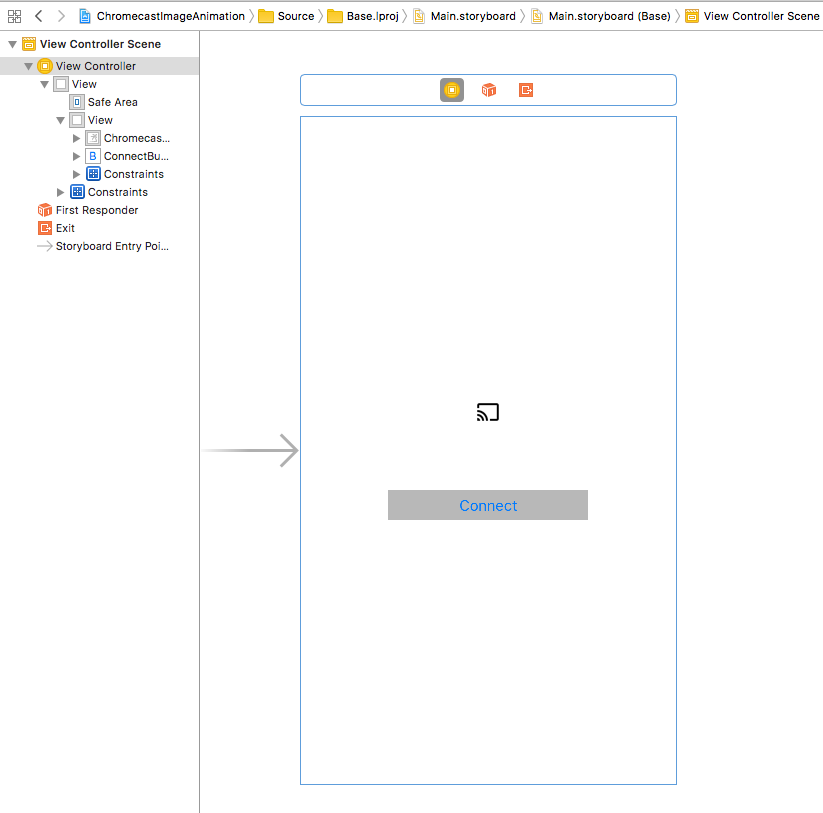Uiimageview Stop Animating and Start Again
How To Make iOS Animations With UIImageView in Swift
Original Link: https://marcosantadev.com/make-uiimageview-animations/
Introduction
When we speak near animations in iOS, we usually call up to the static method animate of UIView or transition animations. In addition to this, UIKit provides too the possibility to create animations with an UIImageView using a serial of images.
This article is split in two parts:
- Theoretical: Description of the public interface of
UIImageViewto create the animations. - Practical: A sample app to show how to create an animation using
UIImageView.
Happy Reading!
Public Interface
UIImageView exposes some methods and backdrop to handle the animations:
-
open var animationImages: [UIImage]? - This array contains the images to evidence in the animation. By default, it's
nil. -
open var highlightedAnimationImages: [UIImage]? - This assortment contains the images to bear witness in the blitheness when the view is highlighted. Past default, it's
cipher. -
open up var animationDuration: TimeInterval - The fourth dimension, in seconds, to complete a cycle of images. Past default, it's the number of images * 1/30th of a 2nd.
-
open var animationRepeatCount: Int - Number of times we want to repeat the animation.
0ways infinite. The default value is0. -
open func startAnimating() - Method to kickoff the animation.
-
open func stopAnimating() - Method to stop the blitheness.
-
open var isAnimating: Bool { get } - Boolean information which indicates if the animation is running.
UIImageView shows the animationImages and highlightedAnimationImages but when the animation is running. If we don't run the animation, the UIImageView shows the default paradigm set in the property:
var image: UIImage? Case
At present, we are fix to make an awarding using the UIImageView for the animations.
In this case, we are going to use an UIImageView to make a Chromecast icon animation:

Getting Started
In the next section, nosotros are going to see all the steps to build the sample app. You lot can download the concluding project here.
The sample app is very evidently. It has ii UIKit elements:
-
UIImageView: We'll utilise this component to show the Chromecast icon and its animation. -
UIButton: The activeness of this button will start the imitation connectedness and disconnection of a Chromecast device.

Ready icons
Before starting coding, we need the icons to bear witness. You can detect the Chromecast icons set up here.
In one case we download the icons, we can add together them in the projection assets with the following names:

Gear up UI
The next pace is creating the UI inside the initial view controller of Main.storyboard:

So, we can link the UI components to ii IBOutlet properties inside ViewController:
@IBOutlet private weak var chromecastImageView: UIImageView!
@IBOutlet individual weak var connectButton: UIButton! Prepare Animation
At this point, nosotros have to prepare the UIImageView for the animation.
In ViewController, we can setup chromecastImageView inside the method viewDidLoad:
override func viewDidLoad() {
super.viewDidLoad() setupImageViewAnimation()
}private func setupImageViewAnimation() {
chromecastImageView.animationImages = [#imageLiteral(resourceName: "cast_0"), #imageLiteral(resourceName: "cast_1"), #imageLiteral(resourceName: "cast_2")]
chromecastImageView.animationDuration = 1
}
With this configuration, nosotros accept an UIImageView which is ready to animate the images cast_0, cast_1 and cast_2 in 1 2nd.
If you don't know #imageLiteral , I would suggest you to have a expect at this article.
Trigger Animation
The last step is triggering the blitheness. Get-go of all, we demand a belongings to shop the Chromecast state connected/disconnected:
enum CastState {
case connected
instance asunder
} grade ViewController: UIViewController {private var castState = CastState.asunder
// ...
Then, nosotros must create a new IBAction for connectButton with the event impact up inside:
@IBAction private func onConnectButton(_ sender: Any) {
} Now, nosotros tin add the implementation to trigger the Chromecast icon blitheness:
@IBAction private func onConnectButton(_ sender: Any) {
switch castState {
instance .connected:
disconnect()
example .disconnected:
connect()
}
}individual func connect() {
// Disables the push to avoid user interaction when the animation is running
connectButton.isEnabled = fakechromecastImageView.startAnimating()
// Simulates a connection with a delay of 3 seconds
DispatchQueue.primary.asyncAfter(deadline: .now() + 3) {
self.chromecastImageView.stopAnimating()// Enables the button to allow user interaction
// Updates UI
cocky.connectButton.isEnabled = truthful
cocky.toggleCastState()
}
}private func disconnect() {
// Updates UI
toggleCastState()
}private func toggleCastState() {
// Updates electric current Chromecast country
castState = castState == .continued ? .disconnected : .connected// Updates button title
let buttonTitle = castState == .connected ? "Disconnect" : "Connect"
connectButton.setTitle(buttonTitle, for: .normal)// Updates `UIImageView` default image
let prototype = castState == .connected ? #imageLiteral(resourceName: "cast_connected") : #imageLiteral(resourceName: "cast_disconnected")
chromecastImageView.epitome = epitome
}
We perform the animation only when we connect a new Chromecast device.
Conclusion
In the sample app, we used the UIImageView for two purposes:
- Set up the property
epitometo show the current Chromecast state (cast_connected/cast_disconnected). - Run the Chromecast icon animation.
In some scenarios, nosotros may not need the point 1. If we want to utilize UIImageView only to bear witness an blitheness, nosotros can assign to the property image an animation similar this:
let images: [UIImage] = [#imageLiteral(resourceName: "cast_0"), #imageLiteral(resourceName: "cast_1"), #imageLiteral(resourceName: "cast_2")]
chromecastImageView.image = UIImage.animatedImage(with: images, duration: 1) In this way, UIImageView shows an infinite blitheness automatically. We don't need to first it manually.
richardsonegglaity.blogspot.com
Source: https://medium.com/@marcosantadev/how-to-make-ios-animations-with-uiimageview-in-swift-74d372ad2837
0 Response to "Uiimageview Stop Animating and Start Again"
Post a Comment